Hernias are caused when a weakness in the muscle or tissue of the body allows an internal part of the body to push through1. Typically, a hernia occurs between the chest and the hips. There are few or no symptoms initially. However, you may notice swelling or a lump in your belly (abdomen) or groin.
3 of the most common types of hernia are:
Exercise can be safe for some people with hernias. It may be safe to exercise with a hernia, but caution should be taken. To prevent additional stress on your hernia, focus on activities that won’t strain that area. It is not recommended to perform exercises or lift routines that strain or pull the abdominal area when suffering from abdominal hernias. Nevertheless, there are several exercises to avoid. Working out safely begins by knowing which exercises to avoid.
Furthermore, working out with a qualified personal trainer or an accredited physiotherapist is recommended. The trainer or physiotherapist can help you with safe exercises. Consult your doctor before exercising when you have been diagnosed with a hernia or are recovering after a hernia operation.
Some evidence is that exercise or yoga can help with or speed up the healing process after Hernia surgery. Exercise and yoga are recommended by physicians and physical therapists for a healthy lifestyle. Understanding the right exercises and the time to begin them from your doctor is important.

Use the thigh muscles during Pillow Squeeze. Begin by lying flat on the floor and bending your knees. Inhale deeply while holding a pillow between your knees. As you exhale, squeeze the pillow gently with both knees. Make sure to repeat this exercise 20 times daily.

Keeping your knees in the same position, exhale while sitting with a pillow between them. Lift your waist and rest your arms on the floor to provide support. Try to stay as straight as possible from your shoulders to your knees. Take in as much air as you can. Sit with a pillow between your knees and return to the initial position. Repeat 20 times daily.
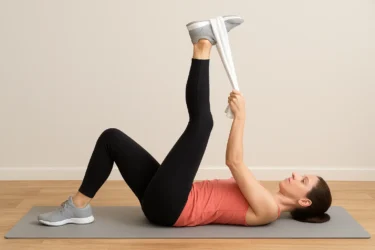
Bend your knees and lie down flat on the floor. Your head and chin should be at the same level. Then, raise one leg up, keeping the other leg bent. Try wrapping a towel around your foot and pulling the lifted leg towards yourself. Try to stretch your hamstring muscles until they feel a bit stretched. Hold that position for at least 30 seconds. Then go back to the starting position. Perform this exercise 10 times a day with each leg.

Keep your knees bent and inhale as you lie flat on the floor. As you exhale, open one knee sideways. Bring it as close to the floor as possible. Now bring the knee back. Proceed in the same manner with the other knee. Do this five times per day. Maintain a straight body position during the exercise.

Keeping your feet apart, bend your knees in the same position. Inhale as you hold your arms straight out in front of you. Inhale slowly as you roll over your hips on your right side. Bend both knees sideways. Do the same on the other side. Repeat this exercise ten times a day, then increase to 20.
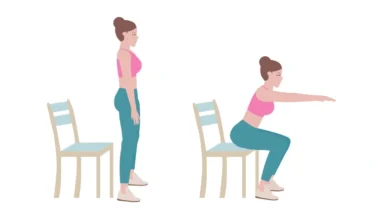
The pose helps strengthen the lower body and core. Keep your feet close together. Put your hands over your head while pressing your knees together. You should keep your thighs parallel to the floor by bending the knees as much as possible. Return to the starting position after holding the stretch as long as possible.
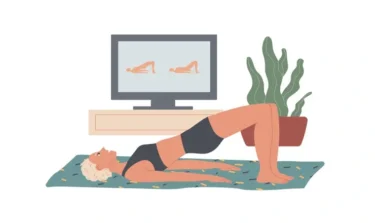
Strengthen the muscles in your stomach with this exercise. With both feet flat on the floor, lie on your back with the knees bent. Keep the shoulders down and lift the lower back off the floor. Remain in this position for as long as possible before returning to your starting position.

It strengthens the diaphragm and can benefit people affected by Hiatal hernias5. You can either sit up or lie down. One hand should go on the stomach, the other on the chest. Take a deep breath through your nose, focusing on your stomach as it rises. Focus on lowering the stomach as you breathe out through pursed lips. Repeat this a few times.

Strengthen your lower abdominal muscles by cycling your legs in the air. Lay on a slant board. You can remove excess pressure from your head and feet while exercising with slant boards. You can do bicycle leg exercises on your slant board by lifting your legs towards your chest. Stabilise yourself by holding your sides while pedalling your legs. Perform these exercises in 10 to 15-minute sessions three times every week.

It is vital to maintain a flexible abdomen to reduce the risk of hernias. Keep your knees straight while you lie flat on the floor. Keeping your back firmly on the ground, bend your legs on each side and try to touch the surface. Keep the posture in place for 5-10 seconds, then return to your starting position. Repeat the exercise on the opposite side. You should perform this stretch daily. Stretching your abdominal muscles increases their flexibility, making them less likely to weaken under pressure.

Any exercise should be performed with correct breathing. Take deep breaths from your abdomen rather than your chest. It helps release abdominal pressure by lifting the diaphragm. Your back should be on the ground. One hand should be placed on your chest, and the other on your belly. Let air enter your abdomen as you breathe through your nose. You should raise your lower hand instead of the hand on your chest as you breathe in.
To be done only after discussing with the surgeon:

In the aftermath of surgery, it is normal to feel some pain. In particular, after abdominal surgery, deep breathing can be quite painful, which makes people breathe very shallowly. Sometimes, the inability to expand the lungs properly can lead to infections in the bottom of the lungs. You should therefore take a few conscious deep breaths throughout the day. You should also use controlled coughing to rid yourself of phlegm or sputum. To aid in coughing and clearing the lungs properly, you can hold a pillow or towel near the surgical wound to provide some support.

Walking around after hernia surgery is a highly recommended exercise to enhance the speed of your recovery. By doing so, you encourage your circulation to run smoothly and encourage your gut to keep working. It is important for patients to walk a little after surgery and increase the distance after recovery. Walking helps speed up recovery and prevents infection and blood clots.

Leg exercises provide you with the strength to keep your legs mobile and prevent blood clots by keeping the circulation moving. Repeat each exercise several times to start with and increase repetitions as you get stronger.

Your core muscles will be strengthened, thus reducing the risk of hernias:
Also Read: Is It Possible to Increase Penis Size? Myths vs. Medical Facts
Certain exercises and activities should be avoided after your hernia surgery or if you have a hernia:
Also Read: 6 Best Yoga Poses & Exercises To Deal With Piles
When exercising with a hernia, keep certain tips in mind to make sure you remain safe. One of the most important steps is to avoid the exercises listed above. As part of your exercise routine, make sure that you include aerobic exercises, glute bridges and postural strengthening exercises.
Be sure not to overdo it. You should be gentle with yourself until your hernia has recovered. If you do it correctly, exercise will help you manage your hernia better and prepare you for surgery if necessary. After surgery, it is definitely an important part of your prevention plan
You always run the risk of worsening hernias when you begin exercising. Hence, patients must seek treatment for a hernia before participating in intense exercise. Every person is different therefore, it is mandatory to discuss with your doctor the right time to begin exercises and the type of exercise one should engage in.
Also Read: Food Choices for Hernia: What to Eat and Avoid
It is safe to exercise with a hernia, however, there may be risks to making your hernia worse. If done correctly, exercise can help you cope with your hernia better6. Ensure to be careful and not overdo your exercises or perform any strenuous exercises. Consult your doctor before doing any exercise.
The benefits of exercise may help you manage many chronic health conditions and alleviate the symptoms of a hernia. However, you must be careful, as some exercises can cause strain on your affected area and may worsen your hernia.
Core exercises such as crunches, planks, sit-ups and some pilates, in other words, exercises that are more advanced, should be avoided. Performing heavy lifting exercises, including deadlifts and squats, at a high intensity, can result in your hernia getting worse. In addition, avoid sports with high impact or contact. Avoid bending down and lifting anything heavy at home.
Yes, walking is a highly recommended exercise for a person suffering from a Hernia. You can go for short walks unless advised otherwise by your doctor.
Disclaimer: The information provided here is for educational/awareness purposes only and is not intended to be a substitute for medical treatment by a healthcare professional and should not be relied upon to diagnose or treat any medical condition. The reader should consult a registered medical practitioner to determine the appropriateness of the information and before consuming any medication. PharmEasy does not provide any guarantee or warranty (express or implied) regarding the accuracy, adequacy, completeness, legality, reliability or usefulness of the information; and disclaims any liability arising thereof.
Hernia is a condition that occurs when an internal organ or tissue pushes through a weak spot or region in the covering muscle or tissue that is supposed to contain it. For example, one of the most common types of hernias is when the intestines (internal organs) push through the lower abdominal muscle wall (surrounding tissue). This produces a bulge in the lower abdominal area1.
A hernia may not be serious immediately, but many hernias tend to worsen with time and will require surgical intervention. Anybody can get a hernia regardless of age or gender, although it may be more common in older adults and those who are overweight. Most hernias occur within the abdominal cavity, between the chest and the hip.
It produces a noticeable lump or bulge that can be pushed back in or that can disappear when lying down. Laughing, crying, coughing or straining during a bowel movement or physical activity may make the lump reappear after it has been pushed in. Speak with a doctor immediately for an appropriate diagnosis.
A hernia can be caused by several reasons. The weakening of the enveloping tissues or other muscles due to ageing, strain, obesity, or birth defects can make it easier for internal organs to push through1.
Risk factors for hernia may also include pregnancy, being overweight, straining when going to the toilet, forceful and regular coughing, or giving birth. Additionally, some hernias may be caused after a surgical procedure, while other hernias, such as hiatal hernias, do not have causes that are fully understood.
This is the most common hernia. The inguinal canal goes from the abdominal region to the lower groin. The weakening of tissues in this region may cause the intestines or tissue from inside to push through and create a bulge at the top of the inner thigh2.
A femoral hernia is a rare type of hernia in the groin region that occurs over the femoral canal in the upper thighs. This type of hernia is more likely in older women3.
When the tissues or muscles near the belly button (navel) become weakened, the internal tissue can push through and make a bump in that area. This is known as an umbilical hernia. If the hernia is detected above the navel but below the breastbone, it is known as an epigastric hernia. This hernia may be noticed more often in young children4.
Inside your body, your digestive organs, like the intestines, are kept separated from the upper chest cavity due to the diaphragm. The diaphragm is a muscle within your chest that keeps the organs separate and organised, but sometimes the diaphragm can become weakened, damaged or have defects from birth. This leads to parts of the stomach pushing through and entering your chest region, known as a hiatal hernia. In some people with severe defects, not only the stomach but multiple organs from the tummy region are free to push into the chest area. This is called a diaphragmatic hernia5.
Incisional hernias occur at the site of an incision or cut, usually made for surgical purposes. After the surgery, the body may not heal the muscle tissue properly, which may lead to a weak point developing. This makes it easier for a bulge to form and the internal organs to push through. Some types of incisional hernias are called ventral hernias6.
Avoiding too much straining of your abdominal muscles after abdominal surgery and allowing your muscles to heal completely goes a long way to prevent the development of a hernia.
Dr. Ashish Bajaj, M.B.B.S., M.D. in Clinical Pharmacology and Toxicology
A hernia can be easily noticed since they typically occur in common places and have similar symptoms. In most cases, you will need to speak with your doctor immediately after finding a hernia. Here are a few key signs to watch for:
Hernia home remedies do not cure a hernia. But they may help reduce the risk of hernia in some people. Consult a doctor for proper diagnosis and treatment of a hernia.
Do not try any exercise or home remedies without your doctor’s consent.

One of the main causes of hernia is strenuous exercise or overexertion. If you are engaged in heavy exercises, cut back and perform easy workouts. People who have suffered from hernia before should refrain from lifting heavy weights7. Some of the following exercises can help reduce the hernia:

Light cycling may be considered safe for people with smaller hernias and may also strengthen your muscles. If cycling is causing you more pain, then it should be avoided completely.
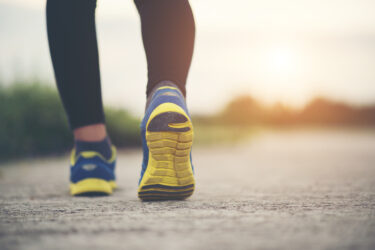
Walking is one of the most beneficial and simple exercises to perform and comes with many health benefits. Walking will generally not put additional strain on your hernia, depending on where it is.

Swimming can relieve a lot of pressure, strain, and pain due to the buoyancy of the water. Speak with your doctor and find out whether this exercise is appropriate for you. You will need to avoid strenuous laps and focus on gentle pool wading to get any benefit from this exercise.

Yoga may also support abdominal muscle strength, similar to the previously mentioned abdominal exercises. Avoid any yoga poses that increase your pain and discomfort, as this may worsen your hernia.

Smaller meals can be effective in decreasing the symptoms associated with hernias that involve the intestines. The less pressure you put on your stomach internally, the easier it is for you to digest your food. This will ensure that your digestive system is not under stress, which may benefit you by limiting your hernia pain.
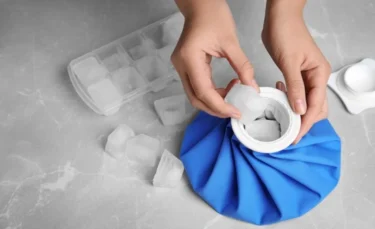
One of the simple natural remedies for hernia is using an ice pack8 as it act as a quick inflammation reliever when your hernia is causing too much discomfort. Always cover the ice with a soft cloth and do not leave it on for long periods.

With more fibre, your stools will be easier to pass and you won’t need to strain. Softer stools can also decrease the risk of constipation.

Obesity and being overweight may increase your risk of a hernia or worsen your condition if you already have one. The more you weigh, the more pressure is placed against your muscle walls. Speak with your doctor about safe ways to lose weight9. While some people may look for hernia treatment at home, it’s important to understand that such cases often require medical attention.
Home remedies for hernia only help in strengthening the muscles and preventing repeat herniation post-surgery. Surgery is the primary treatment for hernia.
Dr. M.G. Kartheeka, MBBS, MD(Pediatrics)
Also Read: Home Remedies for Jaundice By Dr. Siddharth Gupta
If your hernia is not causing you any symptoms like pain or bowel issues, your doctor may not immediately recommend surgery. However, in most cases, a hernia will be accompanied by several serious symptoms that require immediate medical attention. Consult a doctor if you notice the following:
Hernias usually become larger and more severe with time. A strangulated hernia is when the hernia bulge cannot be pushed back inside and becomes trapped within the muscles. This is a dangerous complication. Most hernias are surgically fixed by putting the internal organ back in its place and then strengthening the weak or damaged muscle tissue. Do not delay treatment.
Also Read: 8 Best Home Remedies For Piles
If you suspect that you might have a hernia, speak with your doctor immediately. Even if you do not yet have any hernia symptoms, your doctor will need to monitor your situation and plan for your future. Hernias can be extremely painful to manage and live with. Luckily, there are several surgical options available. Be sure to check with your doctor what instructions you need to follow to manage your hernia before and after surgery.
Also Read: Food Choices for Hernia: What to Eat and Avoid
Most hernias occur due to a combination of two factors occurring at the same time: internal pressure of the organs and tissues and the weakening or opening of muscles or other tissues. This leads to the internal tissue pushing through the outer protective layers and creating a bulge that is easily visible.
The first signs of a hernia are usually a bulge, swelling or bump in the belly, upper and inner thighs, or upper groin that is accompanied by sharp pain in some cases.
A hernia is usually a serious issue unless it is small. Even small hernias eventually turn into serious medical conditions; however, larger ones typically require urgent medical attention and will have more painful symptoms.
No, most hernias do not go away on their own and will require some kind of medical attention eventually.
Hernia often requires surgery to prevent complications such as strangulation or obstruction, but some cases can be managed non-surgically depending on the type, size, and symptoms. Consulting a healthcare professional is essential for an accurate diagnosis and treatment plan.
Yes, hernias can cause pain, especially when the affected area is under strain or pressure. The pain can vary from a dull ache to a sharp, intense discomfort, and it may worsen with activities like lifting, coughing, or bending.
Yes, hernias can cause constipation, particularly if they obstruct part of the intestine. This can lead to difficulty passing stool, abdominal bloating, and discomfort. If you experience these symptoms, it’s important to seek medical advice.
Yes, hernias can affect pregnancy. The increased pressure in the abdomen during pregnancy can exacerbate an existing hernia or contribute to the development of a new one. It is important for pregnant women with hernias to consult their healthcare provider for appropriate management and monitoring.
Hernias typically do not directly cause weight loss. However, if a hernia leads to complications such as intestinal obstruction or severe pain, it may result in reduced appetite or difficulty eating, which could contribute to weight loss. It’s important to seek medical advice if you experience unexplained weight loss along with hernia symptoms.
A hernia occurs when an internal organ or tissue pushes through a weak spot or tear in the surrounding muscle or connective tissue. This can be caused by factors such as heavy lifting, chronic coughing, obesity, or strain during bowel movements.
A hernia often feels like a noticeable lump or bulge in the affected area, which can be accompanied by discomfort or pain, especially when lifting, bending, or coughing. The pain can range from a dull ache to a sharp, severe sensation.
Hernias can sometimes be managed without surgery through lifestyle changes, such as avoiding heavy lifting and maintaining a healthy weight, or using supportive devices like trusses. However, surgery is often recommended to prevent complications and provide a definitive solution.
Yes, hernias can recur even after surgical repair. Factors such as the strength of the repaired area, the patient’s overall health, and postoperative activities can influence the likelihood of a hernia reoccurring.
Hernias themselves do not cause cancer. However, in some cases, a hernia may obscure an underlying tumour or cancerous growth, leading to delayed diagnosis. It’s important to consult a healthcare professional if you notice any unusual symptoms or changes in the area of a hernia.
While hernias themselves are not typically life-threatening, complications such as strangulation or obstruction, where blood supply to the herniated tissue is cut off, can be serious and even life-threatening if not treated promptly. Seeking medical attention for symptoms of a hernia is important to prevent complications.
There can be a genetic component to hernias, as certain inherited factors may predispose individuals to weakened abdominal muscles or connective tissues, increasing the risk of developing a hernia. However, lifestyle factors such as heavy lifting, obesity, and chronic coughing also play significant roles.
While hernias primarily manifest as a noticeable lump or bulge in the abdomen, they can sometimes cause referred pain, including back pain. This may occur if the herniated tissue presses on nerves in the abdomen or affects the alignment of the spine, leading to discomfort in the back or surrounding areas.
A hernia cannot be completely cured naturally, but certain lifestyle changes may help manage its symptoms and prevent it from worsening. Maintaining a healthy weight, avoiding heavy lifting, eating a fiber-rich diet, and practicing gentle exercises can reduce strain on the abdominal area. However, medical consultation is essential, as surgery is often the only effective treatment for a hernia.
1. InformedHealth.org [Internet]. Cologne, Germany: Institute for Quality and Efficiency in Health Care (IQWiG); 2006-. Overview: Hernias. [Updated 2023 Dec 13]. Available from: https://www.ncbi.nlm.nih.gov/books/NBK395554/
2. Hammoud M, Gerken J. Inguinal Hernia. [Updated 2023 Aug 8]. In: StatPearls [Internet]. Treasure Island (FL): StatPearls Publishing; 2025 Jan-. Available from: https://www.ncbi.nlm.nih.gov/books/NBK513332/
3. Goethals A, Azmat CE, Adams CT. Femoral Hernia. [Updated 2023 Jul 31]. In: StatPearls [Internet]. Treasure Island (FL): StatPearls Publishing; 2025 Jan-. Available from: https://www.ncbi.nlm.nih.gov/books/NBK535449/
4. Holt AC, Bamarni S, Leslie SW. Umbilical Hernia. [Updated 2024 Feb 27]. In: StatPearls [Internet]. Treasure Island (FL): StatPearls Publishing; 2025 Jan-. Available from: https://www.ncbi.nlm.nih.gov/books/NBK459312/
5. Smith RE, Sharma S, Shahjehan RD. Hiatal Hernia. [Updated 2024 Jul 17]. In: StatPearls [Internet]. Treasure Island (FL): StatPearls Publishing; 2025 Jan-. Available from: https://www.ncbi.nlm.nih.gov/books/NBK562200/
6. Hope WW, Tuma F. Incisional Hernia. [Updated 2023 Jun 12]. In: StatPearls [Internet]. Treasure Island (FL): StatPearls Publishing; 2025 Jan-. Available from: https://www.ncbi.nlm.nih.gov/books/NBK435995/
7. Pathak S, Poston GJ. It is highly unlikely that the development of an abdominal wall hernia can be attributable to a single strenuous event. Ann R Coll Surg Engl. 2006 Mar;88(2):168-71. doi:10.1308/003588406X95093. PMID: 16551411; PMCID: PMC1964073. Available from: https://www.ncbi.nlm.nih.gov/pmc/articles/PMC1964073/
8. Koç M, Tez M, Yoldaş O, Dizen H, Göçmen E. Cooling for the reduction of postoperative pain: prospective randomized study. Hernia. 2006 Apr;10(2):184-6. doi:10.1007/s10029-005-0062-2. Epub 2006 Jan 24. PMID: 16432641. Available from: https://pubmed.ncbi.nlm.nih.gov/16432641/
9. Dietz UA, Kudsi OY, Gokcal F, Bou-Ayash N, Pfefferkorn U, Rudofsky G, Baur J, Wiegering A. Excess body weight and abdominal hernia. Visc Med. 2021 Aug;37(4):246-253. doi:10.1159/000516047. Epub 2021 Apr 28. PMID: 34540939; PMCID: PMC8406351. Available from: https://www.ncbi.nlm.nih.gov/pmc/articles/PMC8406351/
Disclaimer: The information provided here is for educational/awareness purposes only and is not intended to be a substitute for medical treatment by a healthcare professional and should not be relied upon to diagnose or treat any medical condition. The reader should consult a registered medical practitioner to determine the appropriateness of the information and before consuming any medication. PharmEasy does not provide any guarantee or warranty (express or implied) regarding the accuracy, adequacy, completeness, legality, reliability or usefulness of the information; and disclaims any liability arising thereof.
The hydrocele is an enlargement of the scrotum, the thin sac that contains the testicles. This occurs when too much fluid builds up in the sac. Usually, it occurs in newborns. However, it can also affect adults1.
It is usually not very threatening and might go on its own. However, you should still seek medical attention for it if it does not go away on its own.
Despite being more common in newborns, hydrocele can develop at any age. The development of these may be influenced by underlying injuries or even inflammation. A hydrocele is nothing more than a temporary and inconvenient condition for most people1.
Did you know?
An isolated testicular swelling is usually the only indication of a hydrocele. If you have hydrocele, you might notice symptoms such as redness, itching, soreness, etc. Hydroceles may cause discomfort in adult men due to the heaviness of a swollen scrotum. Generally, the pain increases with inflammation size. Most people with hydrocele do not feel any pain; they just complain of swelling in the scrotum. However, pain may appear along with these other symptoms in some situations. In some cases, the swelling might be smaller in the morning and larger in the afternoon1.
Over the years4, I have observed that based on traditional practices, applying a paste made from fresh corms of Grewia hirsuta (Kukurbijda) on the testicles at night may be used for hydrocele. It is believed that the application of this paste may provide some relief by potentially reducing inflammation or promoting healing in the affected area.
Dr. Siddharth Gupta, B.A.M.S, M.D (Ayu)
Hydrocele can be treated in many ways. However, you should also remember that your diet plays an important role in improving your symptoms. Our diet has a direct impact on our health. People with hydrocele should understand what foods can help improve the condition, as well as which foods can aggravate it. Here are lists of food items that you should and should not eat in this condition:
I have often come across people who get a hydrocele or have dealt with its care. They tend to use the tubers of Gloriosa superba L. (Colchicaceae) by cooking them with mustard oil for two hours. After cooling, the obtained lotion is applied externally on the hydrocele for two to three days. While the exact mechanism is not fully understood, it is believed that the application of this lotion may help reduce swelling and inflammation associated with hydrocele4.
Dr. Smita Barode, B.A.M.S, M.S.

Include fruits like apples, oranges, peaches, pineapple and grapes in your regular diet. Consume fresh, raw fruits and avoid tinned or canned fruits as much as possible. You can also include fresh homemade fruit salads and smoothies without any added sugar.

Include boiled or steamed vegetables in your regular diet. You can have a bowl of boiled vegetables served with your lunch and dinner. A healthy alternative would be to have a fresh vegetable salad every day.

Keeping yourself hydrated is very important. Keep a jug or a bottle of water with you always and make sure to drink water every 15-30 mins. Consuming water and other healthy fluids that will keep you hydrated and healthy is vital, more so for people dealing with hydrocele2.

Both black tea and ginger tea are known to have multiple benefits. Similarly, black tea and ginger tea can be beneficial for people dealing with hydrocele. Every day, a small cup of ginger tea may alleviate some pain and inflammation.

Fibrous food is very important for a good digestive system. Fibre-rich foods such as wheat, barley, rye, oats, methi, machine, jowar, bajra etc., can be beneficial for people dealing with hydrocele as it helps improve digestion3.
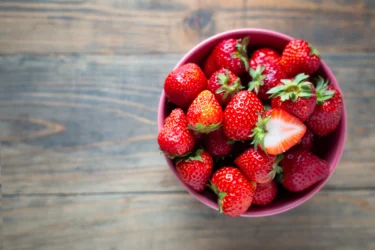
Adding antioxidants to your diet can be very healthy, especially beneficial for people suffering from hydrocele. Strawberries and other red and orange-coloured fruits and berries have high antioxidant content and can help detoxify your body.
Based on my experience, a hydrocele (Eksira) is commonly managed using rhizomes that are dried, powdered, and mixed with honey in a ratio of 1:2. This mixture is taken orally for a duration of two weeks. It is believed that the combination of dried rhizome powder and honey may have potential benefits in reducing the swelling and discomfort associated with hydrocele4.
Dr. Rajeev Singh, BAMS

Excess salt and sugar are found in processed foods. These foods can cause many health problems if consumed in large quantities. Furthermore, they lack fibre and vitamins, which are essential for health. The artificial ingredients in processed foods can also cause serious health problems. People suffering from hydrocele should avoid processed foods.

It is recommended to avoid preserved foods in case you have hydrocele. This is due to the fact that they contain a number of chemicals and artificial preservatives that are unhealthy. Complications and serious health issues can arise as a result of these preservatives. Among the most commonly used artificial preservatives are BHA and BHT, both of which are carcinogenic.

It is recommended that junk foods such as pizza, burgers, fries, etc., be avoided because of their low mineral, vitamin and fibre content. There are a number of problems caused by these and the condition of hydroceles may even worsen. In addition, junk foods are often heavy and contain a large amount of fat, which interferes with bowel movements. This results in constipation, which adds to the strain experienced during bowel movements, which can aggravate the hydrocele.

Spice intake should be reduced if you suffer from hydroceles. You should also avoid heavy and greasy foods. Heavy and greasy foods can be harmful to your health. A lot of discomforts can also be caused by such foods.

Drinks containing caffeine and pickles should be avoided by people with hydroceles. You may experience digestive problems if you consume excessive amounts of salt and oil in pickles. The consumption of large quantities of caffeine also has harmful effects on the digestive system, among other things.
Also Read: Home Remedies That Ease Your Hydrocele
The above-mentioned tips will be very helpful for people dealing with hydrocele to ease their pain and discomfort. Before following these tips, it is very important to first consult your doctor for proper treatment of hydrocele. Hydrocelectomy (a surgical procedure to remove or treat hydrocele) is an effective solution that may be advised by your doctor. Currently, laser-based surgery is used, which is minimally invasive and painless.
Also Read: Varicocele – Symptoms, Causes, Home Remedies
Among the foods that can be beneficial for anyone dealing with hydroceles are fibrous food, fruits and vegetables and plenty of water or any healthy fluid to keep yourself hydrated.
Yoga is highly recommended for hydrocele. Yoga asanas such as Vajrasana, Gomukhasana and Garudasana can be very beneficial.
Hydrocele in infants may heal naturally without any treatment, but in any case, one must consult a doctor for this condition. It is also important to address the cause of swelling and prevent any other complications by prompt treatment.
Hydroceles are more likely to develop in premature babies. An injury or inflammation of the scrotum may cause a hydrocele to appear later in life. Sexually transmitted infections may also cause hydrocele.
1. zaifa M, Moreno MA. Hydrocele. [Updated 2023 Jul 3]. In: StatPearls [Internet]. Treasure Island (FL): StatPearls Publishing; 2025 Jan-. Available from: https://www.ncbi.nlm.nih.gov/books/NBK559125/
2. Leslie SW, Rout P, Pandey J. Filarial Hydrocele. [Updated 2025 Aug 3]. In: StatPearls [Internet]. Treasure Island (FL): StatPearls Publishing; 2025 Jan-. Available from: https://www.ncbi.nlm.nih.gov/books/NBK560776/
3. Akbar A, Shreenath AP. High Fiber Diet. [Updated 2023 May 1]. In: StatPearls [Internet]. Treasure Island (FL): StatPearls Publishing; 2025 Jan-. Available from: https://www.ncbi.nlm.nih.gov/books/NBK559033/
4. Singh H. Traditional phytotherapy for the treatment of hydrocele in Odisha, India. Anc Sci Life. 2012 Jan;31(3):137-40. doi: 10.4103/0257-7941.103198. PMID: 23284221; PMCID: PMC3530339. https://pmc.ncbi.nlm.nih.gov/articles/PMC3530339/
Disclaimer: The information provided here is for educational/awareness purposes only and is not intended to be a substitute for medical treatment by a healthcare professional and should not be relied upon to diagnose or treat any medical condition. The reader should consult a registered medical practitioner to determine the appropriateness of the information and before consuming any medication. PharmEasy does not provide any guarantee or warranty (express or implied) regarding the accuracy, adequacy, completeness, legality, reliability or usefulness of the information; and disclaims any liability arising thereof.
Links and product recommendations in the information provided here are advertisements of third-party products available on the website. PharmEasy does not make any representation on the accuracy or suitability of such products/services. Advertisements do not influence the editorial decisions or content. The information in this blog is subject to change without notice. The authors and administrators reserve the right to modify, add, or remove content without notification. It is your responsibility to review this disclaimer regularly for any changes.
Have you been experiencing an uncomfortable swelling around your testicles? Chances are that you may have developed a hydrocele. It may be difficult for you to understand what this could be, causing stress and panic. Therefore, knowledge about this condition, its symptoms and management can be extremely useful to take the next step. While surgery is a common management modality in modern medicine, traditional medicine has used phytotherapy (treatment using plant species) for managing hydrocele1.
In this blog, we will discuss about hydrocele and its symptoms and also share some home remedies that can help deal with this condition.
Did you know?
Medical terms such as hydrocele are most often beyond the knowledge of an average man; therefore, even if you may be experiencing symptoms, it could be challenging to assess what exactly it is. Hydrocele indicates swelling around the scrotum area which is more commonly observed in newborn babies and usually gets better after some time without any external treatment. However, in adolescent boys and older men, this condition is generally caused by an inflammatory agent or injury inside the scrotal sac. The accumulation of fluid in the scrotal sac causes swelling2.
Hydrocele usually is pain-free and doesn’t pose serious threats to the patient; however, it is always better to be on the safe side and consult with your doctor to get an expert advice on what is causing the swelling.
If you observe pain-free swelling in both or either one of your testicles, it is advised to check with your doctor.
Even though hydrocele under usual circumstances doesn’t result in pain, adult men may experience a feeling of heaviness or some amount of discomfort due to size fluctuation in the scrotum region. In some cases, the swollen area has visibly altered sizes which can cause increased pain and requires medical attention3.
Congenital hydroceles mostly resolve before two years of age. Therefore, parents of such patients should be properly counselled to curb their anxiety. In this regard, providers and nursing staff play a vital role. If hydrocele develops later in life, underlying pathology must be identified, as its prognosis is dependent on it.
Dr. M.G. Kartheeka, MBBS, MD(Pediatrics)
Hydrocele is generally considered a harmless condition. However, there may be various other factors contributing to the swelling of scrotal sac. It is always best to be aware of the potential health risks. You should not self-diagnose your condition or neglect the issue as it may worsen over time. A professional diagnosis renders essential information to take into account. A doctor’s thorough examination will help you establish whether what you are dealing with is entirely non-threatening or carries an underlying health issue that could cause more significant damage.
If you feel you might have an hydrocele, then consult your doctor for diagnosis and management of the condition. Along with medical management, adopting some home remedies may also help in easing the discomfort in your scrotum.
Here are some quick, simple, and effective home remedies you can try:

Our diet directly impacts our health. A diet rich in fruits like oranges, apples, pineapples, grapes and peaches can support the immune system and maintain overall health. Especially fruits rich in antioxidants such as strawberries may aid in the body’s detoxification and help dealing with hydrocele5.
However, if you do switch to a fruit-based diet, then it is essential to avoid canned fruits as they consist of high levels of preservatives and additives that can worsen your condition. Moreover, if you have medical conditions like diabetes, it’s best to discuss with your doctor which fruits you can safely take and in how much quantity.

As important as it is to eat your fruits, it is also essential to add a healthy amount of greens to your regular diet. Including lightly sauteed veggies and fresh vegetable salad in your everyday life can play a contributing role in upgrading your quality of life and helping deal with the symptoms of hydrocele5.

A healthy diet ensures a healthy mind and body. Eliminate the toxins from your body by hydrating yourself with loads of water and healthy fluids5.
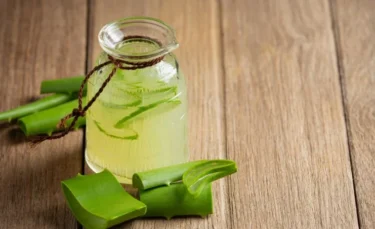
A concoction made of aloe vera and amla juice mixed in equal proportions and consumed every morning on an empty stomach can also be helpful. Their antioxidant and anti-inflammatory properties may help with itching, irritation and puffiness. But talk to a healthcare expert before trying anything new.

Using ice packs at least 2 to 3 times a week may help in easing the pain and soreness5.

Switching to healthier lifestyle alternatives and exercise may help reduce the size of swelling and uneasiness of scrotum6. And yoga may be the right and effective exercise in providing relief to the pain caused by hydrocele. However, it’s important to practice under the guidance of a trained yoga expert to avoid exercises and asanas that can put undue pressure on scrotal areas7.
Also Read: Best Home Remedies for Upset Stomach
Hydrocele or swelling in the scrotal sac can be worrisome if you don’t know about it. Understanding its symptoms can help in diagnosis and reduce panic associated with this condition. While home remedies may help manage mild hydrocele symptoms, these are not a substitute for medical management. If discomfort persists or worsens, it’s important to consult a healthcare professional for proper diagnosis and treatment.
When occurring in newborns, the possibility of a hydrocele disappearing on its own within a year is 70%. Only if the hydrocele remains after two years will the operation be needed. Also, your doctor will evaluate the condition and give the best advice on the necessary treatment.
In an adult, when the hydrocele exhibits a medium to large size, surgery may be the best possible option. Leaving it untreated may cause it to expand in size over a time period causing inconvenience while partaking in daily activities along with constant itching, pain, discomfort and risks of potent infections.
Even though it is pretty uncommon for hydroceles to recur post operation, the possibility cannot be completely ruled out, significantly when the hydrocele has expanded massively.
Disclaimer: The information provided here is for educational/awareness purposes only and is not intended to be a substitute for medical treatment by a healthcare professional and should not be relied upon to diagnose or treat any medical condition. The reader should consult a registered medical practitioner to determine the appropriateness of the information and before consuming any medication. PharmEasy does not provide any guarantee or warranty (express or implied) regarding the accuracy, adequacy, completeness, legality, reliability or usefulness of the information; and disclaims any liability arising thereof.
Varicocele occurs when there is an enlargement in the veins of the scrotum, which is a thin pouch of skin that holds the testicles. These veins normally carry oxygen-poor blood from the testicles back to the heart. However, in varicoceles, the blood collects in the veins instead of flowing out properly, similar to varicose veins. Varicoceles often develop during puberty and may gradually worsen with time. Although they may cause discomfort and pain, symptoms may not be noticeable initially. Over time, varicoceles may affect the growth of the testicles, reduce sperm production, and may be linked to a higher risk of infertility. Symptoms of varicocele include:
If you experience any of these symptoms, you need to consult with your doctor as soon as you can. A timely and accurate diagnosis is important so that it does not cause any serious health problems later. The doctor may suggest surgery or recommend a few helpful exercises for your condition.
Regular movement and gentle exercise of the calf muscles may help provide temporary relief from varicocele-related discomfort. This is because physical activity helps improve blood circulation and reduces the risk of blood pooling in the veins. Aim to move regularly throughout the day and try to gently exercise both calf muscles every hour to support better blood flow. Maintaining a physically active routine is important for managing varicocele symptoms and overall health.
Did you know?
Here are some exercises that may help improve circulation and relieve the discomfort caused by varicocele:

This exercise boosts blood circulation and is great for alleviating the pain and discomfort of varicocele. You must begin by sitting right next to a wall, lying down in a comfortable position, and slowly lifting your legs on the wall. Maintain an angle of 90-120 degrees between your body and legs3,4.
You may rest your arms at your sides and breathe regularly. Hold this position for at least 5 minutes and repeat it every day. This is a very easy yoga posture that may help improve testosterone production.
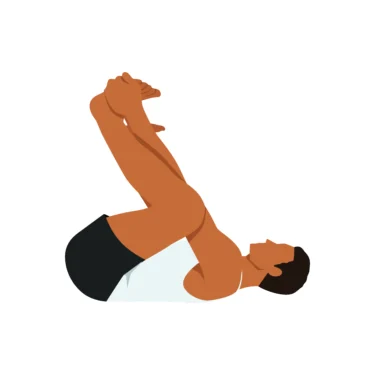
This is a very simple exercise that can be done in the comfort of your home. It promotes better blood circulation and stretches both the inner groin and pelvic regions, thereby temporarily easing the pain associated with varicoceles. It also supports better blood drainage from the testicles. First, lay on your back, bend your knees, and bring them to your chest. Try to hold your feet with your hands. Now, slowly try to draw your legs downwards while maintaining a flat position with your back against the ground, and continue doing this until you feel a mild stretch. Maintain the position for about 1 minute. Do this exercise regularly for positive results5.
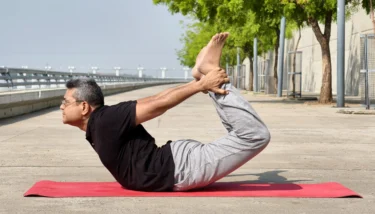
The regular practice of Dhanurasana may be involved in stimulating male reproductive organs and smoothening blood circulation across the entire body. It has several physical benefits, while also relieving stress and anxiety. Start by first lying down flat on your stomach while keeping your feet slightly apart and your arms at your sides. Next, raise your legs behind you and hold your ankles behind your back. Then, while inhaling, attempt to slowly raise your legs and chest away from the ground. Once you get in a comfortable position, breathe deeply and maintain the pose for about half a minute or less3,6.

Start by kneeling with both knees on the floor. You can use a yoga mat for added comfort. Keep your ankles and knees together and sit down on your heels. Make sure you sit straight with your buttocks resting on your heels. Meanwhile, your thighs should be resting on your calves as the big toes of both feet touch each other. Place your hands on top of your knees, keep your arms relaxed, head straight, and chin parallel to the ground. Focus on your breathing as you slowly inhale and exhale air. Hold in this pose for about 5 or 10 minutes and gradually increase the time to around 30 minutes per day7. This exercise has several benefits, including strengthening the sexual organs and pelvic muscles and alleviating varicocele pain. Vajrasana also promotes blood flow to the pelvic area, keeping the varicocele from worsening.

Walking at a regular pace every day has several health benefits, particularly for varicocele, as it helps improve blood circulation. Since poor blood circulation is thought to be the main cause of varicocele, regular walks can, to some extent, reduce the chance of developing them in the first place. Walking may also help ease the swelling and pain in the scrotum.
Along with the exercises given above, breathing exercises can help you feel relaxed, reduce stress, and provide relief from varicocele symptoms3. Make sure you consult a doctor before performing these exercises. It is important to perform yoga poses correctly and let your doctor know if you have any health conditions as all exercises may not be ideal for people with orthopedic issues, back pain, joint pain, and others.
Varicoceles are very common, don’t usually cause any complications and do not usually require any treatment unless they make a person very uncomfortable or if they cause clinical infertility.
Dr. Ashish Bajaj, MBBS, MD in Clinical Pharmacology and Toxicology
While exercising can be very beneficial for your condition, you should avoid straining your body too much as it may aggravate the pain and inflammation. Strenuous physical activity may affect fertility in individuals with varicocele, as suggested by a research study involving athletes with this condition8. Avoid lifting weights as it increases the pressure on the veins in your legs, which can make your condition worse. You must also avoid doing squats and lunges as they add strain and excessive running is not recommended if you have varicocele. Use caution and speak with a doctor if you are planning to perform any exercises for varicocele.
Some believe that Kegel exercises can help in alleviating the symptoms of varicocele. These are easy-to-do pelvic exercises that, when done consistently, can improve and restore muscle tone and blood flow. They are thought to relieve issues like incontinence and varicoceles.
Dr. M.G. Kartheeka, MBBS, MD (Pediatrics)
Varicocele can be quite concerning as it may cause discomfort and affect your daily life. While some self-care measures may offer temporary relief, in certain cases, medical procedures such as surgery might be necessary. Regular exercise may help improve circulation and reduce discomfort, but it is important to speak with your doctor first to understand which exercises are safe for you and to explore suitable treatment options.
Also Read: 7 Best Exercises to Lose Weight at Home
Untreated varicoceles may cause fertility issues, low sperm quality or count, and affect your sexual life2,9.
Exercise can temporarily ease the pain of varicocele if you already have it. However, avoid strenuous exercise as it can aggravate varicocele symptoms.
The main self-care measures for varicocele include regular exercise, avoiding standing for long hours, maintaining your digestive health, and wearing comfortable underwear that offers testicular support, but is not too tight as it may restrict blood flow1.
Disclaimer: The information provided here is for educational/awareness purposes only and is not intended to be a substitute for medical treatment by a healthcare professional and should not be relied upon to diagnose or treat any medical condition. The reader should consult a registered medical practitioner to determine the appropriateness of the information and before consuming any medication. PharmEasy does not provide any guarantee or warranty (express or implied) regarding the accuracy, adequacy, completeness, legality, reliability or usefulness of the information; and disclaims any liability arising thereof.
Varicocele is a condition that affects about 10%-20% of adult men with higher frequency in younger individuals1. It is a condition affecting the scrotum, which is a protective sac covering the testicles (part of male reproductive system). Sometimes, the veins in the scrotum get enlarged and twisted (just like varicose veins in the legs) causing varicocele.
Varicocele may not have any symptoms in many cases. However, some men may experience certain effects such as infertility and scrotum deformation due to persistent and untreated varicocele. Only a trained medical professional will be able to diagnose and treat varicocele. Therefore, if you suspect having a varicocele, it’s important to speak with your doctor immediately. Along with medical therapy, there are home-care measures also that can be followed to ease your discomfort and decrease the risk of varicocele getting worse. Scroll on to learn more about these options.
Varicocele has a simple root cause, just like varicose veins. The oxygen-rich blood gets pumped to all parts of the body through the arteries. After reaching all parts of the body, the oxygen is depleted, and this blood needs to return to the heart through your veins. The veins have one-way valves in them so that blood can only move back towards the heart. However, due to age, damage, or other medical conditions these valves may become weak or stop working correctly. This leads to blood flowing back into the veins instead of getting pushed towards the heart. The excess blood collecting within these blood vessels of the scrotum leads to the veins becoming larger and twisted. In many men, a varicocele may not show any symptoms of enlarged veins but in severe cases, it can be seen visibly2.
Varicocele is usually categorized according to how severe the condition is3:
Varicocele might be a cause for low sperm count, and poor motility, and may lead to an increase in the percentage of abnormal sperm, obtain an ultrasound to get an early diagnosis.
Dr Ashish Bajaj, M.B.B.S, M.D. in Clinical Pharmacology and Toxicology
A lot of men may not even be aware that they have varicocele since it often does not have any noticeable symptoms or effects on their health. Many men only discover varicocele when their doctors are trying to find the cause of infertility or during routine physical examinations. In severe cases, it can have symptoms and will require medical attention. These signs may include2,4:
The most common complication of varicocele is infertility (inability to have a child after 1 year of trying). Also, testosterone levels and sperm quality and quantity may be seen on testing in some cases2. But note that not all men with varicocele will experience infertility. You may or may not have these depending on your condition.
There are no effective medical treatments. If a varicocele is causing pain or discomfort, the use of analgesics and scrotal support can be used initially. When a varicocele is treated surgically, it is usually an outpatient procedure.
Dr. M.G. Kartheeka, MBBS, MD(Pediatrics)
It is important to consult a doctor for the diagnosis and treatment of varicocele. You may also discuss with your healthcare provider about trying these home remedies

Since varicocele is linked to blood circulation, any mild exercise that can improve blood flow will be beneficial for this condition. Regular walks, jogging, and swimming are great for strengthening your leg muscles and supporting your blood vessels. However, certain forms of exercise such as cycling, jumping, squats, and weight lifting may worsen your condition and put a strain on the blood vessels in the scrotum. These exercises should be limited or avoided.

A cold compress or ice pack can be applied to the scrotum region to ease swelling, pain and discomfort, especially after a tiring workout. Do not apply ice directly to the skin, always wrap it in a cloth.
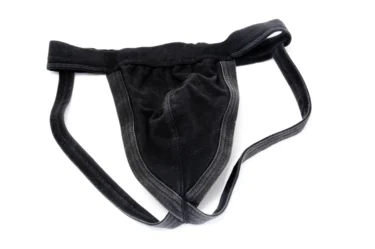
A jockstrap is a type of male underwear that provides extra support to the scrotum. It is often used when playing a variety of sports. You can also use a jockstrap during your regular routine to provide additional support if your job requires you to stand for long periods5.
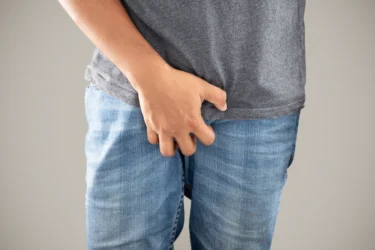
Tight underwear can put unnecessary strain on your scrotum and increase the pressure on your veins. This may worsen your varicocele.

Laying flat on your back can ease the pressure on the veins in your legs and scrotum. This may bring temporary relief from symptoms of pain and discomfort. If possible, try to keep your legs slightly raised when you lay.

A fibre-rich diet will ensure that your food is digested smoothly and that you do not need to strain when passing stools. If you strain too much during bowel movements, you end up adding to the pressure in your scrotum region. Any healthy food that supports smoother movements should be added to your diet, such as leafy greens, fruits, and whole grains6.

Antioxidants are important for fighting free radicals and dealing with damage to your cells caused by oxidative stress. Consuming vitamins with antioxidant properties -in diet or as supplements may lead to better overall health which can be helpful when you have a varicocele as well. However, always consult a doctor before taking supplements7.

Oily, fatty, sugary foods and beverages can interfere with smooth digestion and cause constipation. These items may also increase your blood pressure, which could make your varicocele worse6.

Kegel exercises involve the pelvic floor muscles, where you contract and relax these muscles regularly. Kegel exercises have benefits for incontinence and other issues and may support better blood flow in the scrotum.

Sometimes the pain may be too much to bear, for these cases, you should speak with your doctor regarding the best painkiller medication for you.
While these supportive measures may help deal with varicocele symptoms and avoid its progression, more research is needed to prove the actual benefits of these in varicocele. Therefore, these must always be considered after medical advice. You doctor can guide you best what is more suitable to you based on your needs and general health conditions.
If you suspect that you have symptoms and signs of varicocele, get examined by a physician since untreated varicocele may cause testicular failure, lower hormonal production and shrinking of the testes.
Dr Ashish Bajaj, M.B.B.S, M.D. in Clinical Pharmacology and Toxicology
Varicocele will require medical attention whenever you notice symptoms, whether mild or severe. You may need to change your routine (such as less strenuous exercises) or even undergo surgery if your condition is acute. Here are some signs that you need to consult a doctor immediately:
Depending on your condition, your doctor will recommend the appropriate treatments or surgery. Surgeries may include laser, laparoscopic, or open techniques to remove or tie up the affected vein8.
Also Read: Simple Home Remedies to Help Ease PCOS Symptoms
Varicocele is not something that you need to worry about, even if your varicocele is at one of the more severe grades. There are several techniques and medical options to manage this condition effectively. In many cases, your doctor may only recommend waiting and observing the varicocele rather than opting for surgery, especially if it does not have any symptoms. Speak with your doctor if you suspect a varicocele for a proper diagnosis and the right treatment plan for you.
Also Read: Home Remedies That Ease Your Hydrocele
Pain or a sensation of heaviness in the scrotum, a mass on the scrotum, enlarged scrotal veins, and infertility are some of the symptoms of varicocele, although in some cases, the condition may be symptomless.
Varicocele is caused when the veins present in the scrotum region become weak or damaged. These damaged veins are not able to properly send blood back to your heart, leading to excess blood collecting in the veins.
Generally, varicocele is only permanently fixed through surgical intervention. You may be able to decrease your symptoms by avoiding certain exercises. Therefore, do not delay in consulting a doctor for this problem.
Any healthy foods that are high in fibre can be good for people with varicocele. Poor fibre diets may result in extra strain and pressure when having a bowel movement, which can worsen your varicocele. Fibre-rich diets ensure smoother digestion and bowel movements.
Disclaimer: The information provided here is for educational/awareness purposes only and is not intended to be a substitute for medical treatment by a healthcare professional and should not be relied upon to diagnose or treat any medical condition. The reader should consult a registered medical practitioner to determine the appropriateness of the information before consuming any medication. PharmEasy does not provide any guarantee or warranty (express or implied) regarding the accuracy, adequacy, completeness, legality, reliability or usefulness of the information; and disclaims any liability arising thereof.
Waking up early is usually associated with snoozing your alarms and dreading going to work. This, however, is not the norm anymore! Early mornings are now seen as a respite for many. It is a time of undisturbed peace, serene skies and plenty of time to get recharged for your day. With the new social media trend of following a ‘billionaire’s routine’ which includes waking up at 5:00 am and following certain habits, we also bring you 7 reasons why you should wake up early in the morning!
While it may feel like a chore, waking up early soon becomes a habit and a good one that too to inculcate in one’s hectic routine. Not only can you benefit physically but also mentally.

When you wake up earlier than your scheduled time, not only can you savour your morning coffee but do a plethora of activities. Do not have time for your hobby? Simple, wake up early. Want to incorporate yoga into your routine? You know it, wake up early! Scientists have also proven the existence of sleep inertia. A two-four hour period after waking up where the brain is unable to function at its full capacity and a sleep-induced fog is experienced. Once you start changing your habit, your productivity and energy levels will increase massively.

Those who wake up early also tend to fall asleep at a prescribed time. Your body feels more tired and instead of staying up till 3:00 am binging a series, you will find yourself more inclined to take a rest. Going to bed early can enhance your energy and mood levels. This allows you to complete all four-six cycles of sleep so you can feel rejuvenated the next day2.

It is a scientifically proven fact that beauty sleep is needed to make your skin look fresh and younger. Sleep deprivation or inappropriate sleep cycles can cause fine lines, wrinkles, dark circles and acne. Your skin cells are regenerated while you sleep, fixing the UV damage and increasing the collagen and blood flow. Waking up early also gives you plenty of time to relish your skincare routine.

When you wake up early, you are automatically inclined towards treating yourself with a delicious breakfast that is healthy and makes you feel energized. Breakfast is the most important meal of the day. It gives you a boost of vitality and you can use the opportunity to be mindful of your consumption throughout the day3.

You have extra time to get ready and look your best for the day while enjoying the empty roads and no traffic jams. Waking up early leads to leaving the house earlier for your work, school or college. Less traffic leads to feeling enthusiastic and optimistic about the day while facing less pollution. What’s more, is that you are guaranteed to never be late for a meeting again!

If you are having trouble keeping track of things or nothing seems to be going according to plan you need some time to yourself. Waking up early can assist you in evaluating your plans with a clear and calm mind. Plan the day ahead of time, make a to-do list, journal or use a planner. All these are great ways to feel put together.

Research has proven that those who wake up early have shown better mental health symptoms. They are optimistic, satisfied and feel positive about situations. It also lowers the chance of mental illnesses which is usually found in those who go to sleep late and wake up late. This is also an excellent way of reducing stress because you have already started the day earlier.
As the brain is known to be more alert early in the morning, focusing on important tasks earlier in the day would go a long way to make better decisions and it is also known to improve memory and concentration.
Dr. Ashish Bajaj, M.B.B.S., M.D. in Clinical Pharmacology and Toxicology
Various studies1 suggests that rising early in the morning as described in ancient Indian tradition influences the process of attention and can improve the ability to recall.
Dr. M.G. Kartheeka,MBBS, MD(Pediatrics)
Lastly, we must aim to be kind to ourselves and sleep in late some days. Routine and reset days are as necessary as cheat days to maintain balance. Waking up early soon becomes a habit that leads us to be better versions of ourselves.
1. Kumaran VS, Raghavendra BR, Manjunath NK. Influence of early rising on performance in tasks requiring attention and memory. Indian J Physiol Pharmacol. 2012 Oct-Dec;56(4):337-44. PMID: 23781653.Kumaran VS, Raghavendra BR, Manjunath NK. Influence of early rising on performance in tasks requiring attention and memory. Indian J Physiol Pharmacol. 2012 Oct-Dec;56(4):337-44. PMID: 23781653. Available from: https://pubmed.ncbi.nlm.nih.gov/23781653/
2. Kecklund G, Akerstedt T, Lowden A. Morning work: effects of early rising on sleep and alertness. Sleep. 1997 Mar;20(3):215-23. doi: 10.1093/sleep/20.3.215. PMID: 9178917. Available from: https://pubmed.ncbi.nlm.nih.gov/9178917/
3. Bougard C, Bessot N, Moussay S, Sesboue B, Gauthier A. Effects of waking time and breakfast intake prior to evaluation of physical performance in the early morning. Chronobiol Int. 2009 Feb;26(2):307-23. doi: 10.1080/07420520902774532. PMID: 19212843. Available from: https://pubmed.ncbi.nlm.nih.gov/19212843/
Disclaimer: The information provided here is for educational/awareness purposes only and is not intended to be a substitute for medical treatment by a healthcare professional and should not be relied upon to diagnose or treat any medical condition. The reader should consult a registered medical practitioner to determine the appropriateness of the information and before consuming any medication. PharmEasy does not provide any guarantee or warranty (express or implied) regarding the accuracy, adequacy, completeness, legality, reliability or usefulness of the information; and disclaims any liability arising thereof.
Links and product recommendations in the information provided here are advertisements of third-party products available on the website. PharmEasy does not make any representation on the accuracy or suitability of such products/services. Advertisements do not influence the editorial decisions or content. The information in this blog is subject to change without notice. The authors and administrators reserve the right to modify, add, or remove content without notification. It is your responsibility to review this disclaimer regularly for any changes.
Zinc is a mineral required for several bodily processes. It is essential for cellular function, proper growth and development and overall health. Moreover, zinc can help support mucosal barrier integrity and modulate immune responses,and so is said to help the body fight infections1.
Although there are several food items rich in zinc, its deficiency is still common and widespread in India. Studies reveal that overall zinc deficiency was found to be highest in Orissa followed by Uttar Pradesh2. Fortunately, through dietary changes and supplements, it’s possible to reverse zinc deficiency.
In this blog, we will learn all about zinc deficiency, including its symptoms, how it is detected and how it can be treated.
Because your body doesn’t naturally produce zinc, you must obtain it through food or supplements. Zinc is a vital nutrient naturally present in some foods, added to others and also available as a dietary supplement. Zinc is responsible for several bodily functions. Some of the benefits provided by zinc include1,3:
Zinc is responsible for the smooth functioning of various cellular processes, immune systems, supporting physical growth and development, from birth, through adolescence, up to adulthood. During pregnancy, infancy and childhood, daily zinc requirements are said to increase4. Moreover, certain groups of people are more vulnerable to zinc deficiency and should be mindful of their zinc intake. The list includes5,6:
Acrodermatitis enteropathica is a rare autosomal recessive genetic disorder caused by impaired zinc absorption, seen
rashes and diarrhoea, particularly in children7.
Many times, zinc deficiency may not present with any detectable symptoms. However, there are chances that a person with zinc deficiency may experience symptoms such as8,9:
Zinc deficiency can worsen the course of diarrheal illnesses by impairing intestinal mucosal repair and immune defence. Zinc supplementation is shown to reduce duration and severity of acute diarrhoea, especially in children, and is recommended by WHO during diarrheal episodes.
Zinc is important for several vital functions in your body. If you’re a vegetarian, it might be more difficult to meet daily zinc intake, but you can explore supplements. To start boosting zinc intake, consider eating more:
Discuss with your doctor before including any new food item to your routine diet, especially if you have any medical conditions like diabetes.
Your doctor can treat your zinc deficiency right away with zinc supplements. These are available in multivitamins or as zinc gluconate, zinc sulphate or zinc acetate.
It is important to note that that zinc can interact with some antibiotics and high blood pressure medicines (diuretics). Zinc can interfere with the absorption of certain antibiotics, such as tetracyclines (e.g., doxycycline) and fluoroquinolones (e.g., ciprofloxacin), when taken at the same time.
Diuretics like thiazides (e.g., hydrochlorothiazide) can cause increased urinary zinc loss, potentially leading to deficiency with long-term use.
So, talk to your doctor about the right spacing between the dose of zinc-containing supplements and other medicines that you may be taking. This will reduce any chances of interaction between ongoing medicines.
Excess intake of zinc can also be harmful and zinc supplementation should be done under medical supervision. Common therapeutic doses range from 10–40 mg/day, but long-term use of >40 mg/day may cause copper deficiency and other side effects10. Zinc supplements are often prescribed for 2–3 months, depending on severity and underlying cause. The best practice is to take these supplements based on your doctor’s advice.
In most cases, a zinc deficiency is not an emergency, but it can affect the health in several ways. Zinc deficiency in men can be a cause of impotence, while zinc deficiency in pregnant women may affect the development of the baby. Zinc is an important supplement for people fighting chronic illnesses and acute infections. Zinc plays a critical role in managing diarrhoea, especially in children, along with oral rehydration solutions and other medications to reduce the severity of the illness.
Include zinc-rich foods in your diet, watch for any symptoms of zinc deficiency and get it treated at the earliest. Talk to your doctor about zinc supplementation and always take as advised.
Disclaimer: The information provided here is for educational/awareness purposes only and is not intended to be a substitute for medical treatment by a healthcare professional and should not be relied upon to diagnose or treat any medical condition. The reader should consult a registered medical practitioner to determine the appropriateness of the information and before consuming any medication. PharmEasy does not provide any guarantee or warranty (express or implied) regarding the accuracy, adequacy, completeness, legality, reliability or usefulness of the information; and disclaims any liability arising thereof.
Known by various names across different states of India, Khus Khus or Poppy seeds are a well-known ingredient in numerous Indian cuisines. Since they are a good source of nutrition for people with diabetes, they are used in many recipes meant for individuals with diabetes too. While they have a peculiar nutty taste, they are highly recommended when you want to add a nice aroma to any dish.
Different variants of poppy seeds are readily available. From these, the popular types are:
Poppy seeds are a rich source of dietary fibre which helps you feel full for longer periods of time as compared to other foods. It is also good for bone health and blood clotting. The iron and calcium content of poppy seeds are helpful in the development and health of the nervous system.
A quick guide on the nutritional content of 100g Khus Khus1:
Did you know that poppy seed oil has a high content of linoleic acid, making up around 62% of its fatty acid profile? It also contains significant amounts of other beneficial fatty acids such as oleic acid (24%), palmitic acid (10%), stearic acid (2%), and linolenic acid (1%)8.
Dr. Siddharth Gupta, B.A.M.S, M.D (Ayu)
Here are some popular benefits of poppy seeds:

Poppy seeds may play a helpful role in boosting fertility. They are known to remove mucus from the fallopian tubes and aid in achieving pregnancy. They also help enhance sexual desire and improve sexual health by boosting libido2.

Opium poppy is known to be helpful in inducing sleep. Known to create a calming effect, the seeds help in bringing down stress levels3. They can be consumed in the form of tea or made into a paste and mixed with warm milk to enjoy a blessed slumber.

Being rich in copper and calcium, poppy seeds help in improving bone health. The manganese in the seeds helps in the production of the protein called collagen. Collagen strengthens and protects the bones from severe damage.

Poppy seeds are a rich source of insoluble fibre and can help in strengthening the digestive system and aiding in relieving constipation4.
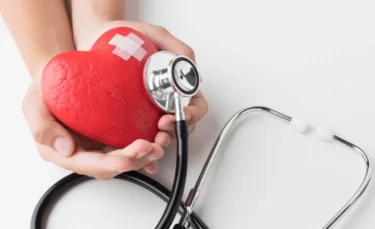
Poppy seeds are rich in iron that helps improve the circulation of oxygen to the body. They also contain omega-3 fatty acids which are beneficial in reducing the chances of cardiovascular diseases.

Since they have a cooling effect on the body, poppy seeds are known to be a great home remedy for mouth ulcers. However, only limited research is known to back this ideology.
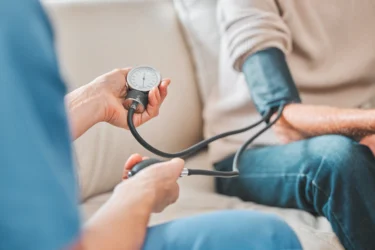
Oleic acid, an essential component in poppy seeds, is known to reduce blood pressure levels in the short term5. However, long-term use has been linked to multiple potential side effects.

The zinc and antioxidants in poppy seeds help to improve vision and protect against eye conditions such as glaucoma6.

Poppy seeds are rich in iron. This helps increase haemoglobin levels. Consumption of poppy seeds can improve the circulation of blood which results in an optimal supply of oxygen to every part of the body including your brain. This can help neurotransmitters function efficiently and improve the functioning of the brain.
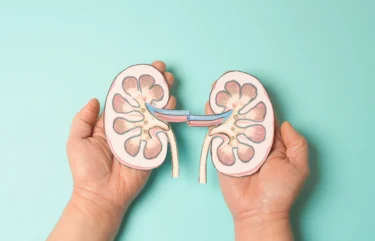
The potassium content in Poppy seeds may help in resolving kidney stones7.
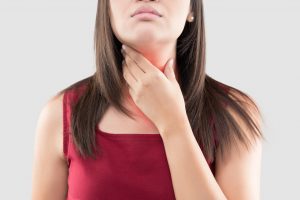
Zinc is a pivotal element for thyroid glands, and thanks to their rich zinc content, poppy seeds can aid proper thyroid functioning.
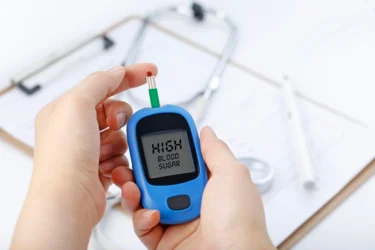
Poppy seeds keep waist circumference under check. This in turn helps manage blood sugar better8.

For generations, poppy seeds have been a tried and tested option to relieve pain9. Many ancient medical practitioners have used the analgesic properties of poppy seeds to comfort their patients in pain. Some reports also suggest the consumption of poppy tea, made by mixing the seeds in hot water, to reduce pain. The pain-relieving property is significantly high in the Opium variant of poppy seeds.
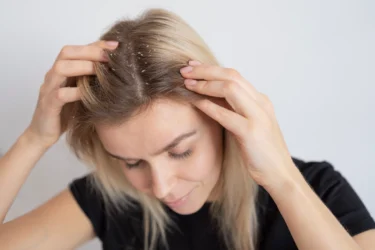
Prepare a paste of soaked poppy seeds, white pepper, and hung curd and apply to your hair. Leave for half an hour and wash off. Use of this paste regularly may help reduce dandruff.

Dry poppy seeds contain very small levels of opium alkaloids. It helps soothe nervous irritability and act as a painkiller10. Poppy seed drink also reduces the levels of cortisol in the body and helps lower stress.
Poppy seeds are found in plenty of bakery products, like bagels and muffins. They can be added to salads as dressing and can be consumed with vegetables too. One can use poppy seeds as a topping, to add some crunch to cheese or on toast.
Here are a few quick recipes to add this wonderful seed to your diet:
Incorporating poppy cake into your diet may provide additional nutritional benefits. It is a valuable byproduct of poppy seed processing that offers new food options. This natural ingredient is minimally processed and has the potential to be used by food manufacturers in the development of new products. It can be particularly beneficial as a functional ingredient, such as in bakery products, due to its high fiber content and being a gluten-free source of high-quality protein8.
Dr. Rajeev Singh, BAMS
Also Read: 8 Most Effective Foods To Fight Thyroid!
Poppy seeds offer numerous health benefits, including supporting digestion, bone health, heart function, and immunity, while also providing essential nutrients and antioxidants. However, they should be consumed in moderation, as excessive intake may cause side effects or interaction with certain medications.
Khus Khus is called poppy seed in English. It may also go by a slightly different variation in India, namely, Khas Khas.
Yes, Khus Khus can be consumed daily either by directly eating the seeds, or making a paste of it and adding it to a glass of milk. One can also steep the seeds in hot water to make Khus Khus tea.
Khus Khus is a good source of the mineral magnesium which our body needs for many cellular processes. Magnesium is also involved in decreasing the levels of the stress hormone cortisol. Thus, Khus Khus can help with longer and deeper sleep.
While respectable and legitimate producers will have little to no opioid content, if you buy Khus Khus from untrustworthy sources then the same may not be true. Be sure to limit your daily consumption to a minimum to avoid any potential health issues.
Disclaimer: The information provided here is for educational/awareness purposes only and is not intended to be a substitute for medical treatment by a healthcare professional and should not be relied upon to diagnose or treat any medical condition. The reader should consult a registered medical practitioner to determine the appropriateness of the information and before consuming any medication. PharmEasy does not provide any guarantee or warranty (express or implied) regarding the accuracy, adequacy, completeness, legality, reliability or usefulness of the information; and disclaims any liability arising thereof.
Links and product recommendations in the information provided here are advertisements of third-party products available on the website. PharmEasy does not make any representation on the accuracy or suitability of such products/services. Advertisements do not influence the editorial decisions or content. The information in this blog is subject to change without notice. The authors and administrators reserve the right to modify, add, or remove content without notification. It is your responsibility to review this disclaimer regularly for any changes.
Just as every woman is unique, so is her pregnancy and onset of labour. Signs that delivery is approaching can vary from one individual to another and may differ even between pregnancies for the same woman. In the ninth month, it may take several hours or even days for early signs of labour to become noticeable.
The initial stage, known as the latent phase, is when the cervix begins to soften, thin out, and gradually open (dilate) in preparation for birth. In this article, we will explore some of the common signs that may indicate labour is approaching, along with useful tips for expectant mothers1.
Although it is difficult to precisely predict the onset of labour or how long a woman’s labour will last, there are a few common signs of labour that are initiated when the foetus produces certain hormones. Here are 5 popular signs of labour every expecting mother should know:
One of the lesser-known signs of labour experienced early on by first-time pregnant mothers is what doctors refer to as “lightening”. When the baby is preparing for birth, it slowly moves into a head-down position. This typically occurs a few weeks before labour in first-time mothers. In subsequent pregnancies, it may happen much closer to labour onset or even during active labour2.
Lightening eases the pressure on a mother’s diaphragm and makes it easier for her to breathe, but it also puts more pressure on her pelvis and bladder. Mothers who have previously given birth, may or may not have this delivery symptom until right before labour begins. Either way, the mother’s belly may appear lower and more protruding and result in frequent bathroom visits.
Towards the end of pregnancy, you may experience true labour contractions, which become more intense, regular, and closer together. These contractions help push the baby down through the birth canal. If you’re having contractions that are regular (e.g. every 5 minutes), last at least 30–60 seconds, and don’t subside with rest, it’s likely true labour Some women may first experience “Braxton Hicks” or false labour contractions, which are irregular and usually subside with rest or hydration3.
An unborn baby in the uterus is surrounded by a protective liquid called amniotic fluid. When this amniotic fluid sac ruptures, the mother experiences a gush of liquid or in some cases a slow trickle, this type of discharge before labour is called a water break4. When the amniotic sac ruptures, it may be experienced as a sudden gush or a slow, continuous leak of clear or straw-coloured fluid. If the fluid is green, brown, foul-smelling, or if you see blood, inform your doctor immediately.
For some women, water breaking signs may not happen at all, in which case an obstetrician or midwife will break it during the delivery, while for others the water may break during labour or some time before it. Once the mother experiences water breaking signs, the baby is no longer protected by the amniotic sac and is vulnerable to infections, so make sure you head to the hospital or call your doctor right away.
A pregnant woman may notice an increase in a type of vaginal discharge with blood before labour’s onset or several days before it5,6. This is called a bloody show, which refers to the passage of the mucus plug mixed with blood. It indicates that the cervix is beginning to dilate and soften.”
Some women experience abdominal cramps, nausea, vomiting, or loose stools in early labour due to hormonal changes and increased pressure on the pelvic organs. These symptoms, while not universal, may accompany the onset of labour4,7.
Women will often self-present to obstetrical triage with concern for the onset of labour. Common chief complaints include painful contractions, vaginal bleeding/bloody show, and fluid leakage from the vagina10.
Dr. M.G. Kartheeka, MBBS, MD(Pediatrics)
Pharmeasy Tips: If you are excessively anxious and worried about the birthing process and labour pain, follow these tips:
If you are fewer than 37 weeks pregnant and experience any these signs of labour, contact your healthcare provider immediately, as they may indicate preterm labour, which requires medical evaluation11.
Dr. Ashish Bajaj, M.B.B.S., M.D. in Clinical Pharmacology and Toxicology
Stay hydrated with water or doctor-approved fluids. Consult your healthcare provider about food intake during early labour, as hospital protocols vary. Preparing for early labour involves more than just physical readiness; it also requires emotional support and self-care. Staying well-hydrated with water or fluids approved by your doctor is important, and you should speak with your healthcare provider about eating during early labour, as hospital rules on this can differ. A supportive birthing partner can make a big difference by helping with calming routines such as yoga, back massages, and other stress-relieving activities. If the pain becomes too strong early on, practicing breathing exercises with your birthing partner can help you manage contractions as they become more frequent and intense. Taking these steps can make early labour a more manageable and less stressful experience8,9.
Also Read: Why Does Sperm Sometimes Smell Fishy?
Disclaimer: The information provided here is for educational/awareness purposes only and is not intended to be a substitute for medical treatment by a healthcare professional and should not be relied upon to diagnose or treat any medical condition. The reader should consult a registered medical practitioner to determine the appropriateness of the information and before consuming any medication. PharmEasy does not provide any guarantee or warranty (express or implied) regarding the accuracy, adequacy, completeness, legality, reliability or usefulness of the information; and disclaims any liability arising thereof.
Next Page »« Previous Page